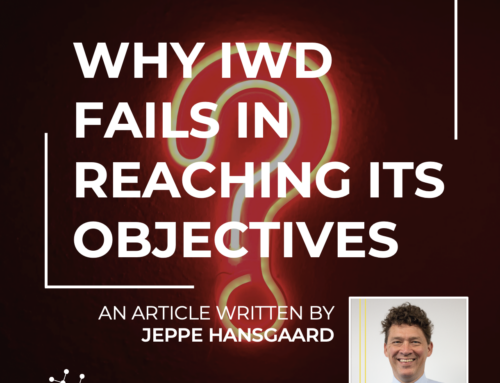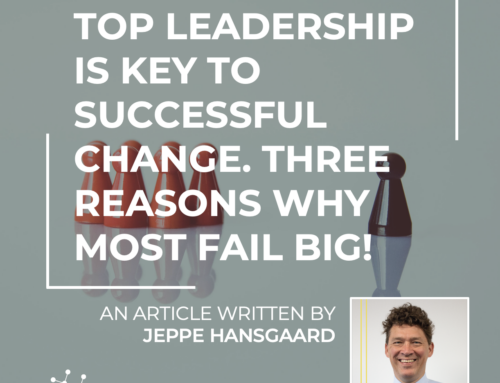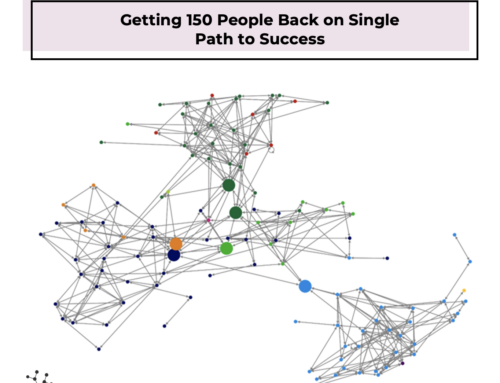FROM OUR CEO
Change Needs to Make Sense Across the Divide
December 15th, 2023 | From our CEO

Social structures and informal networks exist in all aspects of our life. In our family life, in our friendships, and in our work life. It forms how we think, behave, and decide what to support with our time and engagement.
Our Need for Conformity Impact What we Support
Sometimes when we are under pressure and/or we have limited time we take shortcuts to our decisions on what to support. Our judgments are impacted by our need for conformity. We look for signals on how we should perceive things. How we can ‘fit in’.
Like when we arrive at a place, we have never been to before and need a restaurant. Then we look for full restaurants, because we intuitively believe it must be better than the empty restaurant. Or when we need to take a decision in a field, where we do not carry any expertise – and a ask a friend for their advice. Such as I would do if I were to rebuild anything in my house. I know exactly who I would reach out to AND I know I do not carry the expertise myself.
The Social Structures and Informal Networks Exist Regardless…
These social structures and informal networks also exist within organizations. Where people chit-chat, drink coffee, eat lunch… or when you ask and old colleague for help, because you know they know. Based on sympathy and trust. And… some are more trusted than others.
The social structures and informal networks exist regardless of what you do…
Change Needs to Make Sense Across the Divide
Your decision as a leader is to work with it, or risk it works against you. Working with it is a bottom-up approach, where you accept change needs to make sense to people before they change.
It is also an approach, where you bridge the divide that was first described by Yoshida in his “Iceberg of Ignorance”-model. Here he stated that executives only knew 4% of the problems in an organization. Team managers were only slightly better. They knew 9% of the problems. Not knowing the problems makes it hard to role model the change.
3% Shape the Perceptions of 90%
In Innovisor, we have uncovered social structures and informal networks for 15 years. In this work, we have discovered that, if we can find the right 3% of employees then they shape the perceptions of up to 90% of their colleagues. We call them influencers. In all the years, we have been working with this, not a single executive has been able to guess who their top influencer was.
Leaders and managers – as a comparison – typically consist of about 12% of the work force and only shape the perceptions of about 50% of the organization. When we have diagnosed leadership groups, we have found the exact same informal patterns.
Accelerate Change and Improve Success Probability
If you identify those highly influential individuals, mobilize, and engage them as the voices of the people then you can dramatically accelerate any organizational change AND also improve your success probability. You need to listen to them, co-create with them, and collaborate with them, so you can turn them into insiders that convincingly can argue your case.
FROM OUR CEO
Change Needs to Make Sense Across the Divide
December 15th, 2023 | From our CEO

Social structures and informal networks exist in all aspects of our life. In our family life, in our friendships, and in our work life. It forms how we think, behave, and decide what to support with our time and engagement.
Our Need for Conformity Impact What we Support
Sometimes when we are under pressure and/or we have limited time we take shortcuts to our decisions on what to support. Our judgments are impacted by our need for conformity. We look for signals on how we should perceive things. How we can ‘fit in’.
Like when we arrive at a place, we have never been to before and need a restaurant. Then we look for full restaurants, because we intuitively believe it must be better than the empty restaurant. Or when we need to take a decision in a field, where we do not carry any expertise – and a ask a friend for their advice. Such as I would do if I were to rebuild anything in my house. I know exactly who I would reach out to AND I know I do not carry the expertise myself.
The Social Structures and Informal Networks Exist Regardless…
These social structures and informal networks also exist within organizations. Where people chit-chat, drink coffee, eat lunch… or when you ask and old colleague for help, because you know they know. Based on sympathy and trust. And… some are more trusted than others.
The social structures and informal networks exist regardless of what you do…
Change Needs to Make Sense Across the Divide
Your decision as a leader is to work with it, or risk it works against you. Working with it is a bottom-up approach, where you accept change needs to make sense to people before they change.
It is also an approach, where you bridge the divide that was first described by Yoshida in his “Iceberg of Ignorance”-model. Here he stated that executives only knew 4% of the problems in an organization. Team managers were only slightly better. They knew 9% of the problems. Not knowing the problems makes it hard to role model the change.
3% Shape the Perceptions of 90%
In Innovisor, we have uncovered social structures and informal networks for 15 years. In this work, we have discovered that, if we can find the right 3% of employees then they shape the perceptions of up to 90% of their colleagues. We call them influencers. In all the years, we have been working with this, not a single executive has been able to guess who their top influencer was.
Leaders and managers – as a comparison – typically consist of about 12% of the work force and only shape the perceptions of about 50% of the organization. When we have diagnosed leadership groups, we have found the exact same informal patterns.
Accelerate Change and Improve Success Probability
If you identify those highly influential individuals, mobilize, and engage them as the voices of the people then you can dramatically accelerate any organizational change AND also improve your success probability. You need to listen to them, co-create with them, and collaborate with them, so you can turn them into insiders that convincingly can argue your case.
Related articles
Share article
Share article









